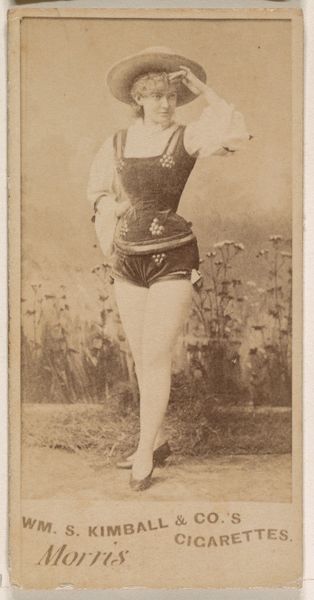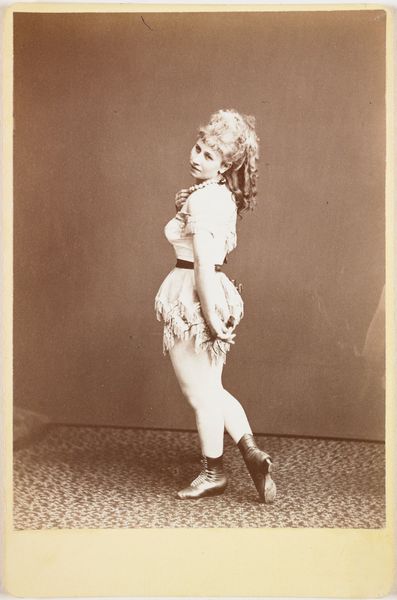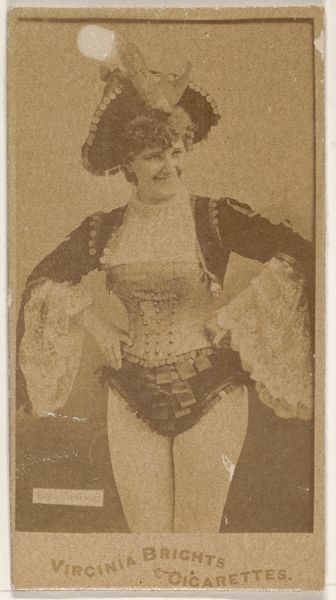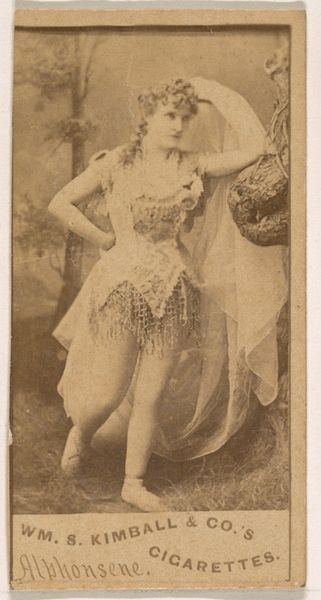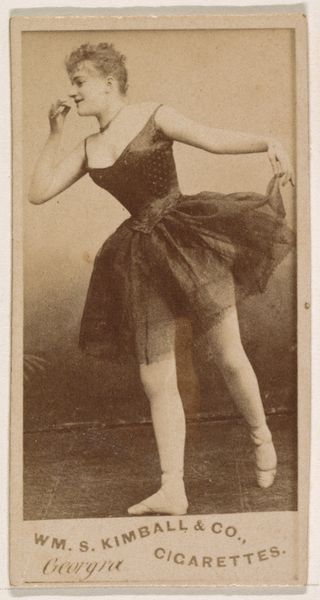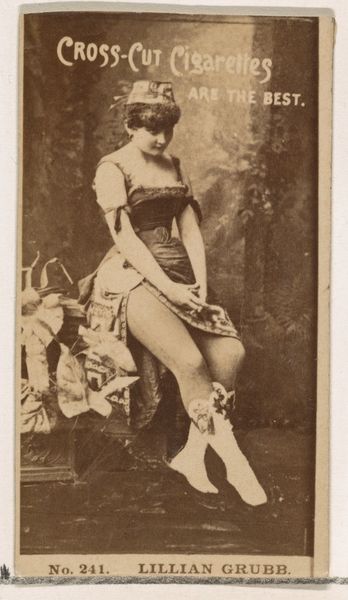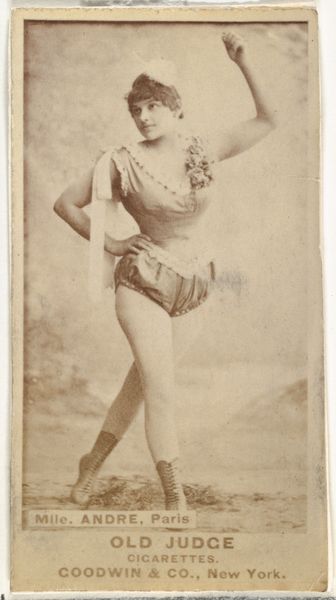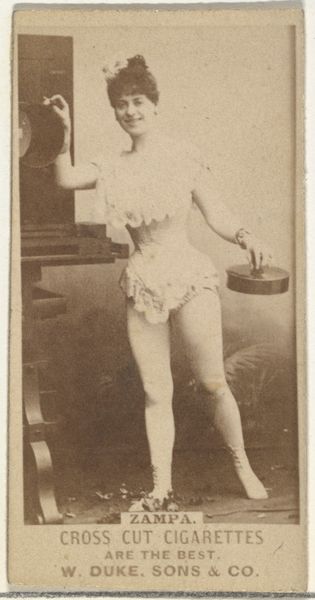
Miss Arnea, from the Actresses series (N203) issued by Wm. S. Kimball & Co. 1889
0:00
0:00
drawing, print, photography
#
portrait
#
drawing
# print
#
figuration
#
photography
Dimensions: Sheet: 2 5/8 × 1 3/8 in. (6.6 × 3.5 cm)
Copyright: Public Domain
Editor: This is "Miss Arnea, from the Actresses series," a print made by William S. Kimball & Co. in 1889. It seems like an advertisement, but also a portrait. What jumps out to you? Curator: What strikes me is the objectification inherent in its purpose: to sell cigarettes. The commodification of the female body here is blatant. How do you read the actress's pose in relation to this marketing strategy? Editor: She almost looks caught in a moment, adjusting her hair, but her body is definitely presented for display. Is there any reclaiming of agency for her in this context, or is it entirely exploitative? Curator: That’s the critical question. The late 19th century saw increasing visibility for women in the public sphere, particularly actresses. But this visibility was often predicated on conforming to certain ideals of beauty and femininity, regulated through clothing and enforced through this kind of image dissemination. It becomes a complex site of both opportunity and control. Consider also that Kimball Co. was a product of post-Civil War industrial capitalism, the legacy of which is… Editor: The mass production and consumption we see today! It's troubling to think of this image contributing to the normalization of such objectification. Curator: Precisely. We have to consider it as part of a continuum, recognizing both its historical context and its enduring relevance in contemporary discussions about gender, representation, and power. The photographic print as commodity, selling another commodity… Editor: It really highlights the layers of exploitation at play. I didn't consider all that at first glance. Curator: It’s about engaging with those complexities, to think critically about who benefits and who is being exploited. It changes the way you look at the image.
Comments
No comments
Be the first to comment and join the conversation on the ultimate creative platform.
